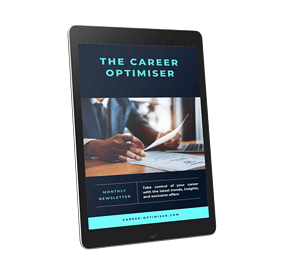How to Write a CV for Applicant Tracking Systems (ATS)
Reading Time: 9 minutes
If you’re looking to improve your chances of landing your dream job, understanding Applicant Tracking Systems (ATS) is crucial. ATS are used by companies to manage their recruitment processes, and knowing how to create an ATS-friendly CV can significantly boost your chances of getting noticed. By the end of this post, you’ll have all the information you need to write an effective CV that performs well across various ATS.
Table of Contents
Understanding Applicant Tracking Systems (ATS)
An Applicant Tracking System (ATS) is a sophisticated software solution used by companies to manage their recruitment and hiring processes efficiently. These systems are designed to handle large volumes of applications, making it easier for recruiters to manage the entire hiring lifecycle from start to finish. By automating the initial stages of the recruitment process, ATS significantly reduce the administrative burden on HR teams.
These systems work by collecting CVs submitted by candidates through online job portals, email, or internal databases. Once collected, the ATS organises and stores these CVs in a centralised database. The software then sorts through the CVs, using advanced algorithms and natural language processing (NLP) to parse the information. This involves breaking down the text into sections like work experience, education, skills, and certifications, making it easier to analyse and compare candidates.
After parsing, the ATS ranks the CVs based on criteria specified by the employer. These criteria can include keyword relevance, years of experience, educational background, and specific skills required for the job. By ranking candidates in this way, the ATS helps recruiters quickly identify the most qualified candidates for further review.
Why Companies Use ATS
Companies, especially large ones, receive hundreds of applications for each job opening. Manually sorting through these applications is time-consuming and inefficient. An ATS automates this process, saving time and ensuring that the best candidates are identified quickly. ATS also enhance the candidate experience by providing timely updates and ensuring a fair and unbiased selection process.
How ATS Works in Recruitment
ATS systems parse and analyse CVs by using advanced algorithms to extract key information such as skills, experience, and education. This involves breaking down your CV into structured data points that the system can easily interpret. Once the ATS has parsed your CV, it ranks you against other candidates based on predefined criteria set by the hiring team, such as keyword relevance, specific skills, and years of experience. Understanding how ATS processes and ranks CVs is essential for creating a CV that stands out. By tailoring your CV to include relevant keywords naturally, using a clear format, and aligning your qualifications with the job description, you can improve your chances of being ranked higher and catching the attention of human recruiters.

The Importance of ATS in Recruitment
Over 98.8% of Fortune 500 companies rely on Applicant Tracking Systems (ATS) to streamline their recruitment processes. In the UK, approximately 89% of large companies use ATS as an integral part of their hiring strategy. This widespread adoption means that the majority of CVs submitted for job applications are first reviewed by an ATS before any human recruiter sees them.
For job seekers, this underscores the importance of understanding how these systems operate. An ATS scans and ranks CVs based on specific criteria set by employers, such as keywords, experience, and education. If your CV isn’t optimised for these systems, it could be overlooked, regardless of how qualified you are for the position.
Knowing how to navigate this technology is crucial. By tailoring your CV to align with ATS algorithms, you significantly improve your chances of making it through the initial screening process. This involves more than just including relevant keywords—it’s about presenting your information in a clear, structured format that the ATS can easily parse and evaluate. In today’s competitive job market, mastering this aspect of your CV could be the key to landing that all-important interview.
Benefits for Companies
- Streamlining the Recruitment Process: ATS automate the sorting and ranking of CVs, saving time and effort.
- Efficient Candidate Management: ATS manage candidate information and track the recruitment process, ensuring no candidate is overlooked.
- Enhancing Candidate Experience: ATS provide automated updates to candidates, keeping them informed throughout the process.
- Promoting Diversity and Fairness: ATS anonymise initial applications and rank candidates based on qualifications and experience, promoting a fairer selection process.
Meet the UK's top CV writers, dedicated professionals who focus on presenting your skills and experiences in a way that resonates with potential employers.
How ATS Parses and Ranks CVs
ATS systems use sophisticated natural language processing (NLP) techniques to analyse CVs. NLP allows these systems to understand and interpret human language by breaking down the text into smaller, manageable components. This process involves several steps, including tokenization, where the text is divided into individual words or phrases, and syntactic parsing, which analyzes the grammatical structure of sentences. The ATS then identifies and extracts key elements such as skills, work experience, educational background, and certifications. This detailed breakdown enables the system to categorise and prioritise information, ensuring that the most relevant qualifications and experiences are highlighted for each specific job opening.
Key Factors That Influence ATS Ranking
- Keyword Usage: ATS look for keywords that match the job description. Using relevant keywords naturally within your CV is crucial.
- CV Structure and Formatting: A clear and simple format helps ATS parse and categorise information accurately.
- Context and Relevance: ATS evaluate how keywords are used within the CV to determine their relevance
Best Practices for Writing ATS-Friendly CVs
Creating an ATS-friendly CV requires a strategic approach to ensure your application successfully passes through initial screenings. By understanding the functionalities and preferences of these systems, you can tailor your CV to meet their criteria. This involves using a clean and simple layout, incorporating relevant keywords naturally, and customising your CV for each job application. The goal is to make it as easy as possible for the ATS to parse and rank your CV accurately, thereby increasing your chances of catching the attention of human recruiters. In this section, we’ll explore the best practices that will help you optimise your CV for ATS, ensuring it stands out in the competitive job market.
Formatting Tips
- Use standard fonts like Arial, Calibri, or Helvetica.
- Avoid using columns, graphics, and tables.
- Ensure clear and consistent date formats.
Strategic Use of Keywords
- Use keywords that match the job description.
- Include variations and synonyms of important keywords.
- Write both full forms and acronyms (e.g., “Search Engine Optimization (SEO)”).
Customisation for Each Application
Tailor your CV to the specific job description and industry. This ensures that your CV meets the unique needs of each application.
Common Pitfalls to Avoid
When crafting an ATS-friendly CV, it’s important to be aware of common pitfalls that can hinder your chances of getting noticed. Many job seekers unintentionally make mistakes that prevent their CVs from being accurately parsed and ranked by ATS systems. By understanding and avoiding these pitfalls, you can ensure your CV remains effective and competitive. Here are some key mistakes to watch out for:
- Overloading CVs with Keywords: Avoid stuffing your CV with too many keywords; focus on relevance and context.
- Using Complex Layouts: Stick to simple, clean layouts that ATS can easily parse.
- Submitting Non-ATS-Friendly Formats: Use Word documents instead of Google Docs or PDFs to ensure accurate parsing.
Future Trends in ATS
The future of Applicant Tracking Systems (ATS) is rapidly evolving, and understanding these changes can give you an edge when writing your CV. Advanced technologies like artificial intelligence (AI) and machine learning are being integrated into ATS to enhance their precision and efficiency. These systems are becoming more adept at matching candidates to job roles by improving keyword matching, contextual understanding, and predictive analytics.
For job hunters, this means that simply stuffing your CV with keywords will no longer suffice. ATS are becoming smarter and can now understand the context in which keywords are used. Therefore, it’s essential to write your CV in a way that naturally incorporates relevant keywords within the context of your skills and experience.
Additionally, AI-driven ATS are beginning to personalise the candidate experience. For instance, they might send tailored emails to schedule interviews or provide personalised feedback on your application status. This trend underscores the importance of clarity and consistency in your CV, as the ATS will be evaluating not just the presence of keywords but also the quality of the information provided.
Predictive analytics are also playing a bigger role. These systems analyse historical data to predict which candidates are most likely to succeed in a given role. As a job hunter, highlighting quantifiable achievements and using clear, concise language can help the ATS algorithm better understand your potential fit for a role.
Staying informed about these trends and adapting your CV to meet the evolving criteria of ATS will significantly increase your chances of landing an interview. Focus on crafting a well-structured, contextually rich CV that aligns with the latest advancements in ATS technology.
Final Thoughts
Optimising your CV for Applicant Tracking Systems (ATS) is no longer an option; it’s a necessity in today’s competitive job market. Understanding how these systems work can make a significant difference in whether your application makes it to the hiring manager’s desk. The key is not to outsmart the ATS but to work with it by providing clear, relevant, and well-structured information.
By adhering to best practices, such as using a clean and simple layout, strategically incorporating keywords, and customising your CV for each job application, you can ensure that your CV is easily parsed and ranked by any ATS. Remember, the aim is to make it as straightforward as possible for the system to understand and evaluate your qualifications.
Avoid common pitfalls like overloading your CV with keywords, using complex layouts, or submitting in formats that ATS might struggle with. These mistakes can easily prevent your CV from being properly assessed and reduce your chances of progressing in the recruitment process.
The future of ATS is bright with advancements in AI and machine learning, which means these systems are becoming more sophisticated and efficient at matching candidates to roles. Stay ahead by keeping your CV up-to-date with these trends, focusing on clarity, context, and quantifiable achievements.
Ultimately, the goal is to present a CV that not only passes through the ATS filters but also stands out to human recruiters. By feeding the ATS the right information in the right format, you significantly enhance your chances of securing that crucial interview.
Do You Need Help With Writing Your CV?

I have spent the last 10 years supporting companies ranging from start-ups to Fortune 500 companies to find and the best talent around the world.
During this time, I have:



For the past 5 years I have been developing best practices and solutions to help good people have great careers and have developed 3 Career Coaching Programmes suitable for all professionals.
Are you interested in working with me?
Best of luck,
Dave Crumby
Your Career Optimiser | Certified Leadership and Management Consultant


MORE INSIGHTS TO OPTIMISE YOUR CAREER
A data-led guide to why LinkedIn visibility matters in a slower job market, with insights from the latest Huntr report...
READ MOREA data-led guide to improving your CV using insights from Huntr’s Q2 2025 report. Learn the small changes that help...
READ MOREDiscover how much a professional CV costs in 2025 across the UK and Europe, what affects the price, and how...
READ MOREDiscover why career progression in Switzerland’s life science sector has slowed and how to position your contribution for the next...
READ MORE






